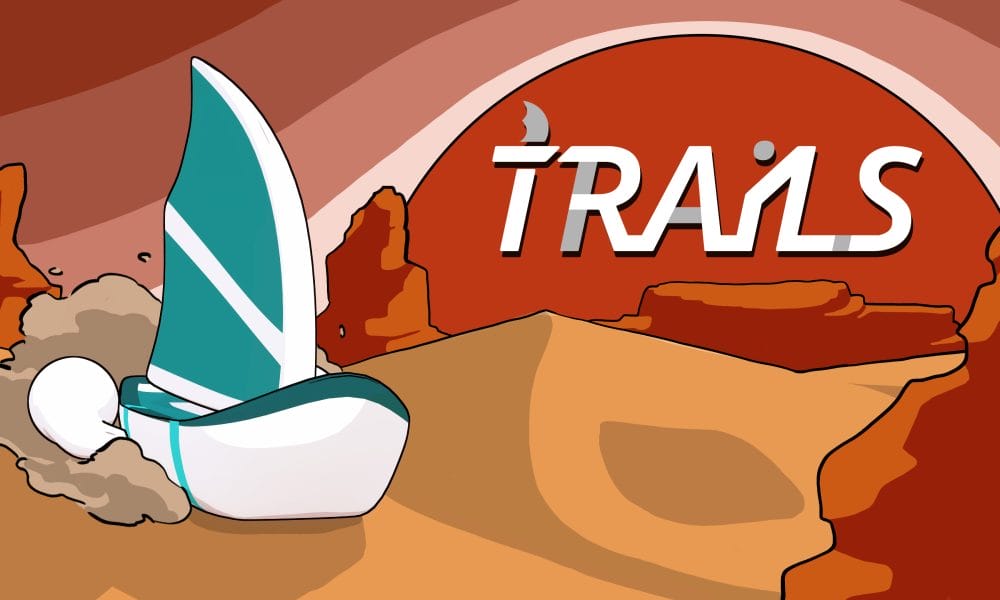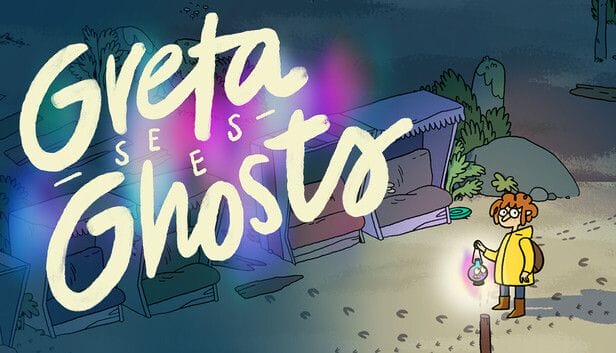I’ve said it before, but one of my favorite things to see in video games, especially puzzle games, is when a simple mechanic is explored and built upon as you progress through a game. I find this more satisfying and interesting than having several systems on top of each other, especially when you are left to learn these rules on your own. Trails, the small meditative puzzle game developed and published by PurpleSloth, is a great example of this methodology.
Trails does have some rough edges, similar to getting sand where you’d rather not have it, but its charm and cleverness are likely to carry you through.

Premise
The premise of Trails is its gameplay; plot the courses of little sailboats navigating a world of sand, with each level growing in complexity, adding challenges and obstacles, all while sticking with a relaxing, contemplative atmosphere.
It’s a fun idea that teases at the possibility of an exciting new world with its own history and culture, but the developers chose to focus on the gameplay. While I do feel this is a missed opportunity to flesh out an interesting world of endless dunes traversed by sailboats, it certainly wasn’t necessary to make a fun experience.
Gameplay
Reviewer’s Note: I used a controller (Xbox) to play Trails, as it was the recommended method by the developers, and button prompts will be labeled as such.
Trails starts off easy, letting players get used to the fundamental rules of the game. Each vessel needs its route plotted across a static grid map to reach the port that matches its colour, and each boat cannot enter a square that it has already been on. Once you have finished creating routes for your little ships, you press the Y button and watch as everything on the board moves at the same time, according to their pathing.

The game’s design is very intuitive and allows for quick changes to pathing or restarting a level at any time. You can even choose to see it play out step by step, giving the player the opportunity to assess the situation. It’s this attention to the UX (User Experience) that makes Trails shine. One of my favorites is that each level saves your successful run, so you can return to previous levels to see how you did it, and even try out alternatives if the mood takes you.
The game’s UI is simple and effective, with no unnecessary clutter on screen. Players can switch between each boat, highlighting their path while still keeping everything else visible, and you view every level from the same fixed camera angle.

Early on, the only things you need to worry about are holes in the ground, mountains of sand, and colliding with another vessel. At certain levels, new elements are introduced, such as hovering drones that collide with your boats, or depots that your ships need to carry water or cacti to before docking. There are no spikes in difficulty along the main path of Trails, with each new factor given several levels so players can understand them before the devs add another one. By the end of the game, I was well-versed in all the rules, and the challenge came in applying them all in the correct order with all the elements in play. It’s that gradual difficulty curve that speaks to the strength of Trails’ design; I never felt that I was looking at a puzzle I couldn’t solve, I just couldn’t see the answer right away.
For puzzle fans worried their grey matter won’t get enough of a test, Trails has several tougher side levels you unlock as you progress along the main path. These can be accessed by going to the level selection screen and appear as offshoots with flaming icons. I found a number of these quite tricky, and I’m happy to say that I still haven’t solved all of them, giving me something to go back to now that I’ve finished the 40 or so levels that make up the main game. Some of these side levels contain gold coins that one of your ships must deliver to port at the end of the level, which are tracked on the top right of the level selection screen. These levels, along with the game’s final and only multi-stage level, are Trails’ toughest moments, and I guarantee puzzle fans will find them formidable.
Visuals
Trails has a pared-down but appealing visual style, like a board game laid out in the baking sun. With a limited palette of soft orange tones making up the majority of the screen, it creates a soothing aesthetic that deftly implies the endless sea of sand Trails exists in. Your ships and other pieces on the board are coloured appropriately, making them stand out from their surroundings and easy to read. You cannot rotate the camera around the board, so players can be sure that nothing is hidden away.




I really like Trails’ art direction and its execution, especially how congruent it is with the game’s premise, with a simple shadow adding just the right amount of depth. However, I do feel that the game could benefit from some colour variety. It would have been nice to see colours change as you complete levels, like the passing of days, just to help break up the flow without disrupting the chilled-out vibe.
The game’s animations add to its board game aesthetic, with each piece gliding across the tiles in time with each other, like watching a clockwork toy in action. While there are no rewards for completing each level, the satisfying animation of each block being lifted offscreen, only for the next level to come cascading down, felt like a little celebration of my success every time.
I mentioned the game’s level selection screen earlier, which is depicted as a map with the main levels chained together as a throughline. It wiggles from the left side to the right, with side levels branching off here and there, navigating between named landmarks. It’s another great example of the congruent design of the game, but also feels like hints at what could have been.

While I appreciate the simplicity of Trails, it does feel strange to boot up a game and not be met by some sort of start screen. It doesn’t detract from the gameplay experience, but does make the game feel a bit rushed.
Sound
Unfortunately, I found the music of Trails to be quite underwhelming, especially having watched the game’s release trailer before playing, which set my audio expectations far too high. There seems to be only one piece of gentle classic guitar that plays throughout the game, and while it fits the tone, after an hour, it became monotonous, and I muted it in favour of my podcasts. I won’t hold the choice in trailer music against the game, but I would have appreciated a few track choices throughout my 4 hours playing the game.
The game’s sound effects are matched well to what is happening on screen, the soft hiss perfectly matching the movement of your boats sailing across the sands. Everything is muted, even collision explosions are gently muffled so as not to disturb Trails’ calm nature.

Conclusion
I think it is the game’s minimalist design that ends up being both its biggest strength and greatest weakness. While the gameplay of Trails is intuitive and relaxing with an excellent difficulty curve, the game suffers from a lack of variety across its music and visuals, despite how well they match the game’s premise. I was very impressed with the level of attention given to much of the UI and UX, even if certain elements like a start screen did feel like they were missing.
Trails is a relaxing and well-designed experience that will keep puzzle game fans happy for a few hours. While it may not always be smooth sailing, I think it is a cerebral excursion across the dunes worth taking.

Trails is available on PC(Steam and itch.io), and was played on PC using a controller.
We would like to thank the developers for providing the code for the purpose of this review.
Trails was featured in the Cerebral Summer Showcase 2025.




